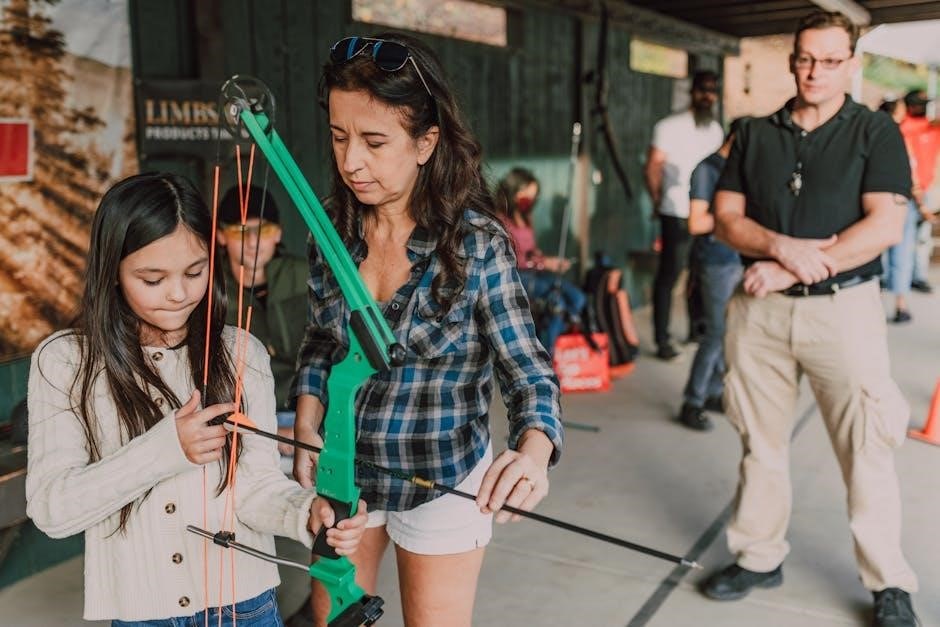Gagne’s Nine Events of Instruction is a model that helps develop and deliver effective instruction, using a behaviorist and cognitivist approach to support learning processes and outcomes successfully always.
Definition and Overview
Gagne’s Nine Events of Instruction is an instructional design model that aims to help develop and deliver effective instruction.
The model is based on the idea that there are certain conditions of learning that must be met in order for learning to occur.
This model is a behaviorist model that also draws from cognitivism, and it provides a framework for designing instruction that is tailored to the needs of the learners.
The model consists of nine events that are designed to support the internal processes of learning, and it can be used in conjunction with other instructional design models, such as Bloom’s Revised Taxonomy.
The nine events of instruction provide a structured approach to designing instruction, and they can be modified to fit the needs of different learners and learning contexts.
The model has been widely used in education and training settings, and it has been shown to be effective in promoting learning and improving instructional outcomes.
Overall, Gagne’s Nine Events of Instruction provides a useful framework for designing effective instruction and promoting learning.
The model is based on a set of principles that are designed to support the learning process, and it provides a structured approach to instructional design.
The nine events of instruction are designed to be flexible and adaptable, and they can be used in a variety of different learning contexts.
The model is widely used and respected in the field of education and training.

The Conditions of Learning
Conditions of learning are essential to Gagne’s ideas of instruction, supporting internal learning processes and outcomes always successfully online.
Breaking Down the Conditions
The conditions of learning can be broken down into several key components, including internal and external factors that influence the learning process.
These conditions are essential to creating an effective learning environment, and can be applied in a variety of settings, from traditional classrooms to online courses.
By understanding the conditions of learning, instructors can design instruction that is tailored to meet the needs of their students, and help them achieve their learning objectives.
This can involve using a range of strategies, such as providing clear instructions, offering feedback and support, and encouraging active participation and engagement.
Ultimately, the goal of breaking down the conditions of learning is to create a learning environment that is supportive, inclusive, and effective, and that helps students achieve their full potential.
The conditions of learning are a critical component of Gagne’s Nine Events of Instruction, and are essential to creating a comprehensive and effective instructional design model.
This model has been widely used in a variety of educational settings, and has been shown to be effective in promoting student learning and achievement.
It is a valuable resource for instructors and instructional designers, and can be used to create a range of instructional materials and programs.

The Nine Events of Instruction
Gagne’s model includes nine events that help develop and deliver effective instruction successfully always online.
Event 1: Gain Attention
The first event in Gagne’s Nine Events of Instruction is to gain the attention of the learners, which is a crucial step in the learning process. This event is designed to stimulate the learners’ interest and motivate them to learn. According to Gagne, gaining attention is essential to ensure that the learners are focused and ready to receive the instruction. This can be achieved through various means, such as using a provocative question, a surprising statistic, or a thought-provoking image. The goal of this event is to capture the learners’ attention and create a sense of curiosity, which will encourage them to engage with the instruction. By gaining attention, the instructor can create a positive learning environment and increase the likelihood of successful learning outcomes. The instructor can use various strategies to gain attention, including the use of multimedia, real-life examples, and interactive activities. Effective attention-gaining strategies can help to increase learner engagement and motivation.

Implementing the Nine Events
Effective implementation of Gagne’s Nine Events requires careful planning and execution to support learning outcomes always successfully online.
Sample Methods and Tips
To implement Gagne’s Nine Events of Instruction effectively, various sample methods and tips can be used, such as providing clear learning objectives and outcomes, using real-life examples and case studies, and incorporating interactive and engaging activities.
The use of technology, such as multimedia and online resources, can also enhance the learning experience and support the implementation of the Nine Events.
Additionally, teachers and instructors can use various assessment and evaluation methods to monitor student progress and understanding, and to identify areas where additional support and instruction may be needed.
By using these sample methods and tips, educators can create a more effective and engaging learning environment that supports the needs and abilities of all students, and helps to achieve the desired learning outcomes and objectives.
The implementation of Gagne’s Nine Events of Instruction can be tailored to meet the specific needs and requirements of different subjects and disciplines, and can be used in a variety of educational settings and contexts.
Overall, the use of sample methods and tips can help to ensure that the implementation of Gagne’s Nine Events of Instruction is successful and effective.

Reference and Further Reading
Gagne’s work is cited in various sources, including books and articles, providing further reading and reference materials always available online.
Adapted from Gagne, Briggs, and Wager
The work of Gagne, Briggs, and Wager has been widely adapted and applied in various educational settings, providing a framework for instructional design. Their model has been influential in shaping the way instructors approach teaching and learning. The nine events of instruction, as outlined by Gagne, Briggs, and Wager, provide a structured approach to lesson planning and delivery. This approach has been adapted and modified to suit different learning environments and contexts. The adaptation of their work has led to the development of new instructional design models and strategies. The nine events of instruction have been incorporated into various educational programs and courses, providing a foundation for effective teaching and learning. The work of Gagne, Briggs, and Wager continues to be relevant and influential in the field of education, with their model being widely used and adapted by instructors and educational designers. Their contribution to the field of instructional design is significant and enduring.
